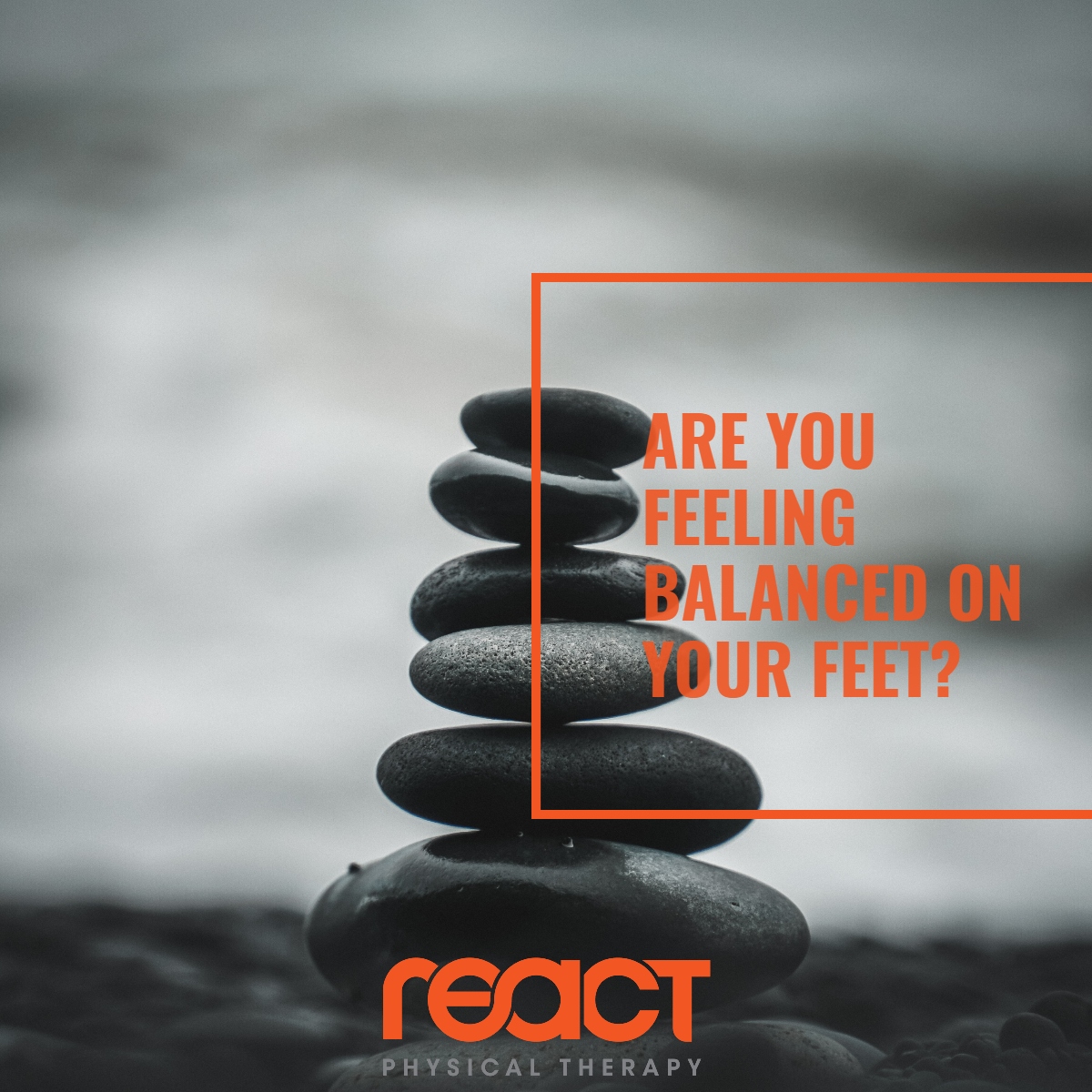Are You Feeling Balanced on Your Feet?

Balance equals control. The more balanced we feel as individuals the more control we tend to perceive in our daily lives. This does not change when it comes to being balanced on our feet. Balance is something that we constantly are striving for in our lives and something that can easily erode with age, injury, and weakness. Luckily, with a little focus and some direction balance can be regained at any stage of our lives. It plays such a large role in our activities of daily living, recreational participation, and overall health and wellness.
Balance is more than just standing on one leg. It is the ability to perceive our environment, adjust quickly to that environment, and plan for future movements. It involves three separate systems within our body Visual, Vestibular, and Proprioception. We use the balance in both static (staying in one place) and dynamic (on the move) movement patterns. If we can maintain a good balance on our feet, ultimately we will reduce the risk of falling and further injuries.
What are some ways you can improve your balance? Test where your balance stands:
- Single leg balance– 3 sets of 30-45 seconds
- Begin with eyes open and advance to closing eyes for difficulty
- Stand on an uneven surface like grass or pillow to challenge further
- Walking in a straight line
- Begin with walking heel to toe trying to maintain a straight line
- Walking the straight line, now challenge it by turning head side to side
- Sit to Stand– 2 sets of 12 reps
- Place a sturdy chair against the wall to avoid sliding, look straight forward and sit tall, and stand up from the chair without using your hands. Then, return to the sitting position while maintaining control throughout the entire motion.
- To challenge the movement, follow the above instructions but stand from the chair using one leg and return to the sitting position with the use of the same leg.
- Single RDL– 2 sets of 10 reps per leg *Advanced movement for dynamic balance training*
- Standing on one leg, weight through the heel, kick your opposite leg behind you, at the same time bring your chest forward towards the ground (like a see-saw) hold, and repeat. Keep your back flat and do not rotate your hips
- To further challenge, perform the same movement pattern as above while reaching and tapping objects on the floor around your feet.
It is no surprise that balance training tends to be a key focus in most physical therapy sessions with patients in all stages of injury rehabilitation and age groups. The more balanced an individual is, the stronger an individual’s movements become.